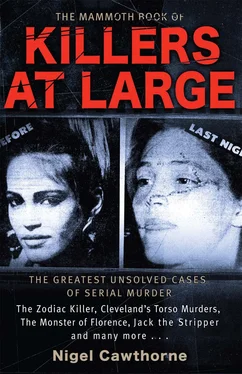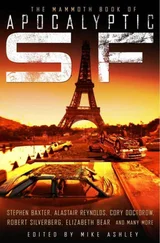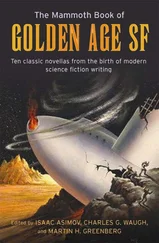The crime remains unsolved and the $100,000 reward, posted by Johnson & Johnson for the capture and conviction of the Tylenol Terrorist, has never been claimed.
However, the Tylenol killings set off a wave of copycat product tamperings afterwards. In 1982 alone, the US Food and Drugs Administration recorded 270 incidents—36 of them “hard core”. A 14-year-old boy in Minneapolis named Marlon Barrow became ill after drinking chocolate milk that had been contaminated and 27-year-old Harry Browning in Florida was sick after drinking orange juice laced with insecticide. Neither died. But Congress was so worried that, in May 1983, it passed the “Tylenol Bill” that made the malicious tampering of consumer products a Federal offence.
Then in February 1986, 23-year-old Diane Elsroth was visiting her boyfriend in New York, where she took two Extra Strength Tylenol capsules from a new “tamper-proof” bottle. She was dead within minutes. Again the cause of death was cyanide; three more deadly capsules were found in the bottle.
A rapid recall located another bottle containing a poisoned capsule at a Woolworth’s in Westchester County. It seems that even the new seals could not be trusted and the publicity surrounding the murder of Diane Elsroth sparked a new wave of copycat tamperings. There was another death just four months later.
Just after 6 a.m. on 11 June 1986, 40-year-old bank manager Sue Snow woke in the Seattle suburb of Auburn with a headache. She took two capsules of Extra-Strength Excedrin, a rival to Tylenol made by Bristol-Myers. Then she went into the bathroom to have a shower and fix her hair.
Her 15-year-old daughter Hayley went into the bathroom 40 minutes later to see what was taking her so long and found her mother sprawled unconscious on the floor. She called 911. Sue Snow rushed to hospital, where she died a few hours later without regaining consciousness.
An aneurysm in the brain was suspected, but doctors found no evidence of internal bleeding. The symptoms also suggested an overdose, but Hayley insisted her mother neither drink nor smoked—and certainly did not take drugs. With no obvious the cause of death, a post mortem was ordered.
During the autopsy, one of the pathologist’s assistants noticed a faint odour of bitter almonds emanating from the body—the telltale sign of cyanide. Lab tests confirmed that cyanide was indeed the cause of death. The source was traced to the bottle of Extra-Strength Excedrin and Bristol-Myers organized a national recall.
Hysteria spread through Washington. Police stripped all nonprescription capsules from pharmacy shelves and the FBI was called in. They found two more bottles of contaminated painkillers, one in Auburn and one in the adjoining suburb of Kent.
The day after the highly publicized product recall had started, 17 June, Stella Nickell telephoned the police. The 42-year-old widow said she feared that her husband had been poisoned the same way less than two weeks earlier. On 6 June, 52-year-old Bruce Nickell, a heavy equipment operator who worked for Washington State, had collapsed and died after taking four capsules of Extra-Strength Excedrin. A post mortem had initially determined the cause of death to be complications resulting from emphysema and Bruce Nickell had already been buried. However, earlier he had volunteered to be an organ donor, so a sample of his blood serum had been kept. On 19 June a lab test on the serum showed cyanide to be present. By that time the police had discovered two bottles of contaminated Excedrin capsules in Nickells’ home.
All five contaminated bottles were sent to the FBI crime lab in Washington, D.C. to be checked for fingerprints that might belong to the killer. During the examination, lab technician Roger Martz made an unusual discovery. He found that the cyanide in all five bottles contained tiny green crystals. Breaking the particles down chemically, he identified it as the substance that killed algae in fish tanks. He even came up with the brand name: Algae Destroyer. And he concluded that the killer had mixed up the cyanide in a container used earlier for crushing pellets of the algicide.
FBI agent Ron Nichols then spotted an anomaly. Of the 740,000 capsules from Washington, Oregon, Idaho and Alaska the FDA had examined, the capsules that contained cyanide were found in only five bottles—and two of them were found in Stella Nickell’s home. If she had bought the two bottles in the same store at the same time, that might just be a case of bad luck. However, Stella Nickell said she bought them at different times in different stores. The odds against such a coincidence were infinitesimal.
Stella Nickell, a grandmother with two daughters, seemed an unlikely suspect. She worked as a security guard at the Seattle-Tacoma airport and lived a seemingly happy life with her second husband Bruce in a trailer on a large woody lot. Neighbours said she was cheerful and hard-working and seemed genuinely grief-stricken when Bruce suddenly died. But then FBI agent Jack Cusack, who was now heading the investigation, remembered something seemingly insignificant another agent had told him earlier—“Stella Nickell has a fish tank in her trailer.”
Agents combed pet stores to see if anyone recalled selling Algae Destroyer to Nickell. On 25 August 1986, a clerk at a store in Kent identified Stella Nickell from a photo montage. She stuck out in his mind because she had a little bell attached to her purse and he called her “the woman who jingled”. Intrigued, FBI agents began a background check on the grandmother who had now become their prime suspect.
Between 1968 and 1971, she had convictions in California for cheque fraud, forgery and child abuse. What’s more the Nickells were chronically short of money, barely escaping bankruptcy recently and the bank had been moving to foreclose on their trailer before Bruce died.
The crisis had been averted when the state had paid out $31,000 in life-assurance, a policy that they maintained as Bruce Nickell’s employer. However, they would have paid out $176,000 if his death had been “accidental”—under the policy being poisoned by a random killer would have qualified as accidental. The problem was that the doctor who examined Bruce had failed to detect the cyanide. The autopsy said that her husband had died of natural causes. Stella Nickells had called the hospital to question the post-mortem findings. She stood to make an extra $105,000 if the cyanide was found. That was why she had had called the police.
Furthermore, in the year before his death, Stella had taken out two $20,000 policies on Bruce’s life. Now she had even filed a wrongful death suit against Bristol-Myers for “contributing to” her husband’s death.
Up until this point, Cusack had been trying to find a link between the murders of Sue Snow and Bruce Nickell. Now he was faced with the chilling thought that Stella Nickell had put bottles of Excedrin laced with cyanide on drug store shelves—risking the lives of many others and taking one—to make the murder of her husband look like an accident.
On 18 November, Cusack asked Stella Nickell to come in for a routine interview at FBI headquarters in Seattle. As a dark-haired, middle-aged woman in a buckskin coat walked into his office sat down, Cusack heard a soft jingle from the bell on her purse.
First, he went over the details of her husband’s death, then asked where and when she had bought the tainted bottles. Had she ever bought Algae Destroyer? he asked. She said no. Then he asked whether she had ever bought extra life assurance on her husband. Again, she said no.
Cusack had caught her out lying, twice. So he asked Stella Nickell if she would take a polygraph test. She refused, sobbing like a grieving widow and saying that she was not in a fit state to undergo any further questioning. Cusack let it go at that, but kept up the pressure in what he calls his “pebbles-on-the-roof” technique.
Читать дальше











